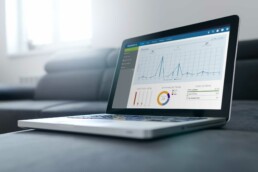Estimating Demand: Methods and Techniques
The ability to accurately estimate demand, along with its methods and techniques, is the cornerstone of effective business planning and strategy, especially during bustling periods like the holiday season. In this blog, we’ll delve into a variety of techniques and methods for estimating demand. Specifically, we’ll explore how leveraging historical data and harnessing advanced statistical analysis can empower you to predict market demand with greater accuracy and confidence.

Historical Sales Analysis
One of the most straightforward methods for estimating demand is historical sales analysis. By examining past sales data, you can identify patterns that, in turn, provide insights into future trends. Although this method has limitations, such as not accounting for broader industry trends, it can still provide valuable indications of your company’s performance and potential future demand.

PPC Ad Analysis
For businesses utilizing pay-per-click (PPC) ads, analyzing metrics such as cost per conversion and ad budget can yield valuable demand estimations. By scaling these metrics against projected holiday increases, you can gain insights into the potential impact on sales. While not universally applicable, this method can be particularly effective for online businesses.

Leveraging Public Market Data

Surveys and Focus Groups
When market data is scarce or your niche is unique, engaging directly with customers through surveys and focus groups can provide valuable insights. For instance, if you find that traditional market research methods are insufficient, then using direct feedback can offer a more nuanced understanding of your audience. Consequently, these insights can help you tailor your strategies more effectively. While self-reported data has its limitations, it can serve as a starting point for understanding customer preferences and expectations.

Conducting Market Studies
Market studies involve scientific principles to test demand under controlled scenarios. While time-consuming, these studies offer robust insights into demand estimation. They are particularly useful for businesses seeking a more objective and less subjective approach.

Regression Analysis
If your business possesses substantial demand data, regression analysis becomes a powerful tool. Regardless of your level of advanced statistical knowledge, regression analysis enables you to discern relationships between variables. As a result, this insight helps you understand how changes in your products or business operations directly affect demand.

Utilizing Sales Staff Knowledge
Your sales team holds a wealth of firsthand market insights. Thus, engaging with them can offer a practical understanding of customer demand. While not as statistically rigorous, their accumulated experience can yield reasonably accurate estimations.

Consulting Outside Experts
In situations where data is unclear or contradictory, seeking input from external experts can provide much-needed clarity. These specialists offer specialized knowledge and insights, which can help you navigate complex demand estimation scenarios.
Beginner’s Guide to Third-Party Logistics (3PL)
The world of e-commerce is always changing, therefore understanding the roll of Third-Party Logistics is integral to keeping up. In light of this our beginner’s guide to third-party logistics (3PL) will delve into the essential aspects, offering insights into fulfillment services, warehousing, and much more.
Read More…
Accurate demand estimation is a critical aspect of successful business operations
By employing a range of methods, you can gain valuable insights into market trends and customer preferences. For example, historical analysis and advanced statistical techniques both empower you to make informed decisions. Consequently, you can optimize resource allocation and strategically plan for the future.





